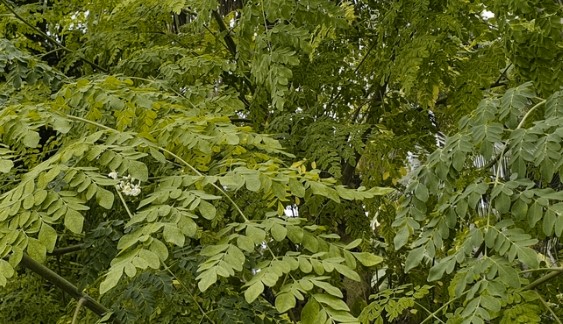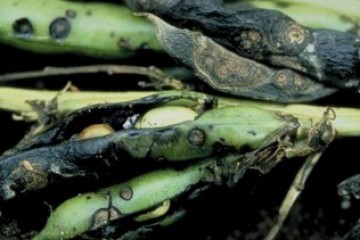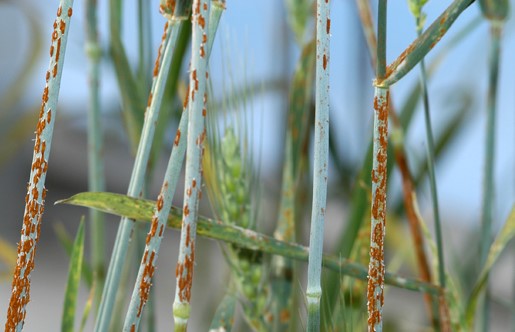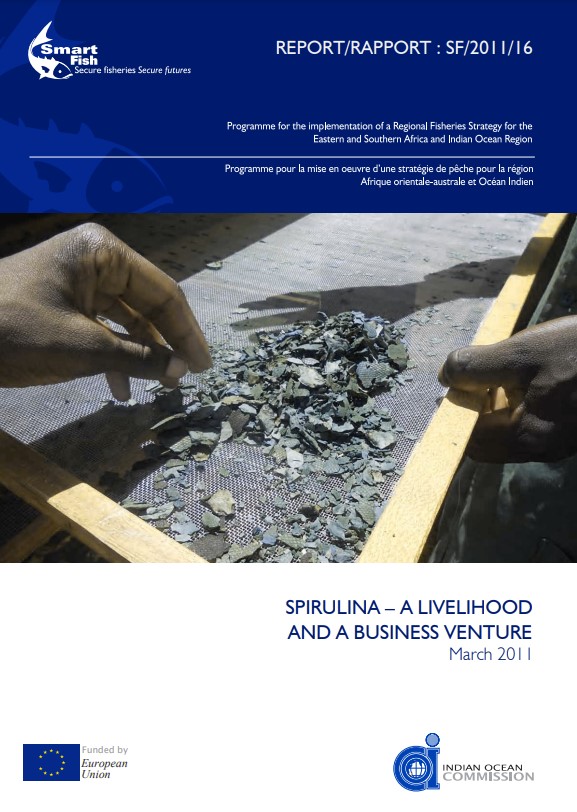Spirulina basics
Growing spirulina is actually quite simple. It is an ancient organism present at the beginning of time and pretty much knows how to look after itself with only a bare minimum of husbandry.
These are the basic components required for spirulina to flourish and to be useful to us.

Water
Spirulina grows in an aqueous (watery), nutrient-rich media. However, unlike vegetables or crops it does not actually use much water to increase its biomass. If the evaporation is controlled by cultivation in a closed system then it's water consumption is many times less than even the most drought-hardy crop plants.
What is more, spirulina can grow in poor quality water that would not be suitable for agriculture - plants or animals.
The most important factor is that the water used is free of heavy metals and other toxins.

Sunlight
The key thing to know about spirulina is that it is photosynthetic. That is, like green plants, it turns the sun's energy into chemical energy in the form of carbohydrates.
Therefore, when considering a location to grow spirulina it is important to remember that yield is directly correlated to the amount of light it receives. Growing locations that are situated further north or south from the equator will experience significantly shorter yields during the winter months when the days are shorter.
While spirulina can be grown under artificial lighting, sunlight is the most energy efficient and best source of light because it contains the right wavelengths to optimize growth.

Agitation
Spirulina is a single-celled organism that arranges itself in trichomes, or single cells joined together, end to end, to form a strand, that float around in the watery host environment. The trichomes on the surface of the media will receive the most sunlight while those deeper in the culture will receive progressively less until they are starved of light and cannot grow. Therefore, it is important that in a spirulina farm to keep agitating the culture constantly so that all the trichomes have some time in the sunlight.

Carbon dioxide
Spirulina's main food is carbon dioxide. It uses the sun's energy to take carbon dioxide from its environment to make carbohydrates, which it later uses as an energy source and cellular building material.
While it is true that CO2 is increasing in the atmosphere due to our activities and is causing the climate to change, it makes up only 0.04% of the gases in the air. The yield of spirulina will be severely limited if the amount of CO2 in the culture medium is supplied only by atmospheric CO2. In other words, extra CO2 needs to be supplied to a culture medium to make yields viable.
CO2 is most often increased by adding sodium bicarbonate or by pumping waste CO2 from industrial processes through the culture.

Nutrients
Spirulina, like any organism, requires a number of different nutrients to grow and thrive. Similar nutrients to those that are added to crop plants must be added to the culture medium. The most important nutrients include nitrogen, phosphorus, potassium, magnesium and sulfur, as well as some micro- nutrients and minerals.
While plants grown under organic systems can take advantage of natural processes in the soil, which mineralize and cycle nutrients that then become available for plant growth, cultivated spirulina requires the nutrients to be added in the pure mineralized form.
Selvanex Projects is addressing this problem by developing systems that seek to reduce the use of fertilizers.

Means of harvesting
Because spirulina is grown in an aqueous medium, harvesting it involves extracting the spirulina biomass from the culture media. This is done by filtering out the biomass using a fine mesh that catches the spirulina trichomes while allowing the medium (liquid) to pass through.
Larger-scale spirulina farming operations often use centrifuge machines to separate the host liquid from the biomass.
The freshly harvested material is a rich, green paste that is usually dried before use, but can also be frozen.
Cultivation contexts



Since all spirulina needs to grow is water, nutrients, sunlight, a container to grow in, and agitation, it can be farmed in a small bottle at home, in an aquarium, a plastic tub, a swimming pool or in massive ponds such as raceway ponds holding millions of litres of liquid. Below, we profile some different possible growing contexts to demonstrate the flexibility and scalability of spirulina cultivation.
Domestic backyard cultivation




Growing spirulina in your backyard, or even your windowsill, is like owning your own nutraceutical factory. There is no other means of producing the impressive range of vitamins and phytonutrients contained in spirulina in such a small space. It is very unlikely that you could grow 1000 kg of vegetables in your back garden but you could grow the nutritional equivalent - 1 kg of spirulina. Likewise, you could not grow 1kg of animal protein on your windowsill, but you could grow 1kg of spirulina protein there. Per square metre of space, the yield from spirulina cannot be beaten by any other organism.
But, of course, it is not an either/or proposition. Spirulina cultivations can easily fit into backyard garden without taking up a lot of space. Diversity is key.
What you need to cultivate spirulina domestically:
Some starter culture.
A vessel with transparent sides.
Some common fertilizer.
An aquarium air pump.
Some silk screen mesh to use for harvesting.
Low tech, small volume spirulina farming






Ideal for resource-limited subsistence farming communities.
The beauty of spirulina is that it can be grown at virtually any scale and technological level.
It particularly lends itself to small-scale semi-subsistence farms where investment funds are limited. It gives farmers who recognize the importance of diversification a means to ensure their incomes are more robust as climatic extremes and uncertainties begin to impact traditional forms of agriculture.
In this context, all that is needed is access to toxin-free water and plastic liners or concrete blocks to form cultivation ponds. The output is a marketable, versatile and highly nutritious product.
The FAO has recognized the potential of spirulina for small landholders and has published a report that details a business case for setting up small-scale spirulina farming enterprises to enrich diets and diversify livelihoods.
Multi-species integrated spirulina farming (permaculture).



Selvanex Projects promotes spirulina production systems where the spirulina is cultivated as part of an integrated system that leverages synergies between various nitrogen-fixing plant species, chickens and the spirulina. Chickens can be fed with legumes and will then provide organic waste and manure, rich in nitrogen and other essential nutrients, which can be used to feed spirulina without relying heavily on synthetic fertilizers. This system has the advantage of producing different forms of protein while being more robust due to the interspecific synergies. It also has a low carbon footprint and is cheaper for farmers because they do not have to spend as much on fertilizers. The chickens are also a source of food (meat, eggs) in themselves.
High tech, large volume spirulina farming



In a larger, mechanized raceway pond system, spirulina is cultivated in shallow, oval-shaped ponds, where paddle wheels gently circulate the water to ensure an even distribution of light, nutrients, and gas exchange. These ponds, often lined with concrete or plastic to minimize contamination, are a cost-effective and efficient option for medium- to large-scale production. While raceway systems are generally located outdoors and exposed to sunlight, they still require careful monitoring of water quality, pH, and temperature to maintain optimal growth conditions. Nutrients are regularly added, and water levels are managed to offset evaporation. Although they are "lower tech" than closed bioreactor systems, mechanized raceway ponds still achieve high productivity levels with relatively low operational complexity, making them a popular choice for sustainable, scalable spirulina farming.
In large-scale, high-tech spirulina farming, operations are often centered around automated, closed-loop systems that maximize growth efficiency and minimize environmental impact. These facilities are typically housed in controlled environments like greenhouses or custom-built bioreactors, where parameters such as light, temperature, and pH can be carefully regulated through advanced sensors and monitoring software. Cutting-edge filtration and nutrient dosing technologies ensure optimal water quality and nutrient availability, enhancing productivity and quality.
Yield comparisons: spirulina vs traditional protein crops
SPIRULINA | RED KIDNEY BEAN | MUNGBEAN | COWPEA | |
|---|---|---|---|---|
Harvest g/m2 /yr | 150,000 | 120 | 73 | 60 |
Protein g/m2 /yr | 85,000 | 27 | 17 | 14 |
Carbs g/m2/ Yr | 36.000 | 55 | 34 | 36 |
Energy kcal /m2/yr | 435.000 | 420 | 253 | 200 |
Price USD $/kg | $15 - $60 | $1.30 - $3.00 | $1.50 - $3.50 | $1.20 - $2.50 |
We are not suggesting that spirulina should replace traditional crops. We do believe, however, that spirulina can and will become an important supplementary food source in many parts of the world. The above figures make a compelling argument for farmers to include spirulina cultivation in their activities. Comparing the most important metrics usually used to assess farming production, spirulina significantly out-performs any traditional crop we can compare it to. Looking at the factors of useful biomass yield (harvest index), energy output, and nutrient content, spirulina is superior to other crops by orders of magnitude. What is more, spirulina can command a significantly higher market price. Then there is the issue of risk.
Spirulina as a risk reduction strategy for small land-holders








There is no question that farming is an incredibly risky enterprise. It always has been and with extreme weather events increasing in frequency it is getting even more risky. By incorporating spirulina into their farming activities, farmers can diversify their production, reduce their vulnerability to climate change and other agricultural risks, and potentially improve their food security and economic stability.
While it won't replace traditional crops, spirulina can serve as a valuable complement to existing farming activities, providing a robust risk-minimization strategy in an increasingly uncertain agricultural landscape. Here's why spirulina makes a compelling addition to a farmer's portfolio.
Climate Resilience
Traditional crops are highly vulnerable to seasonal variability, extreme weather events and longer-term climatic shifts. With increasing frequency, farmers in many places are experiencing crop losses due to droughts, floods, abnormally high temperatures, or extremely low temperatures and frosts. By contrast, spirulina is remarkably resilient to seasonal climatic variability and extreme weather events. Further, it thrives in higher temperatures from 35-37°C, while traditional crop yields become heat-stressed during the reproductive phase at temperatures much above 32°C. For many cropping zones around the world, projected temperature increases during crucial phases of crop development will cause current crop varieties to become increasingly unviable.
Water Efficiency
Water scarcity is a growing concern for many farmers. Spirulina cultivation is incredibly water-efficient: It requires only 2,100 liters of water to produce 1 kg of protein (even less in a closed system), compared to 9,000 liters for soybeans and 15,000-30,000 liters for beef. What is more, spirulina can be grown in poor quality water unsuitable for traditional crops.
Land use efficiency
Each year the planet loses approximately 10 million ha of arable land. This loss of farmland is impacting farmers all over the world and further exacerbates the pressure caused by climatic uncertainty. For this reason, land use efficiency is critically important. Farmers need to grow more on less land. Again, spirulina has a significant advantage here. For example, it uses 26 times less land than soybeans and up to 1600 times less land than beef to produce 1 kg of protein. Further, spirulina can be grown in relatively small spaces not usable for traditional agriculture. As the previous table indicates, an impressive volume of high-quality produce can be grown on a space of just 1 m2.
Pest and disease resistance
Farmers frequently face devastating crop losses due to pest and disease outbreaks. Even worse, as the climate changes, there is a corresponding shift in the distribution of pests and diseases. Diseases and bugs from warm areas are moving into what used to be colder areas where those things could not live. Crop varieties traditionally grown in a given area are likely to have very little resistance to these new challenges. Spirulina cultivation is less susceptible to these risks. As microalgae, spirulina is simply not affected by the pests or diseases that plague traditional agriculture.
Nutritional security
For subsistence communities, food insecurity is a persistent problem. Spirulina can help address this because it is one of the
most nutrient-dense foods on the planet. Further, unlike traditional crops, its entire biomass is digestible, resulting in zero wastage.
Economic stability
Farmers are vulnerable to market shocks and price volatility. In a good year where farmers in a region all have higher yields market forces will push the price of their produce down. Because of its (current) high price and resilience to environmental challenges, spirulina can provide a reliable source of income to offset the riskier parts of the farmer's enterprise.
Here it is worth noting that spirulina has a growing market demand due to its nutritional properties.
Resource use efficiency
Traditional farming often suffers from inefficient use of nutrients, with up to 65% of applied fertilizers never being taken up by plants. This represents a significant cost that increases what the farmer must risk financially to establish the crop. Spirulina, cultivation, on the other hand, is almost 100% nutrient-use efficient, as it absorbs nutrients directly through its cell wall.
Easy to scale
Unlike traditional crops that require significant land area to make the farming operation economically viable, spirulina can be grown at various scales. It can be cultivated in containers as small as a drink bottle or as large as commercial raceway ponds. This scalability allows farmers to start small and expand as they gain experience and resources. A spirulina farm can be adapted to each farmer's particular set of resource constraints.
ACKNOWLEDGEMENT
We respect the Whadjuk Noongar people as the traditional custodians of the land where Selvanex Projects is based, and acknowledge their elders, past and present. Our commitment to sustainable agriculture is inspired by their culture of living in harmony with the Earth and managing its resources responsibly.

